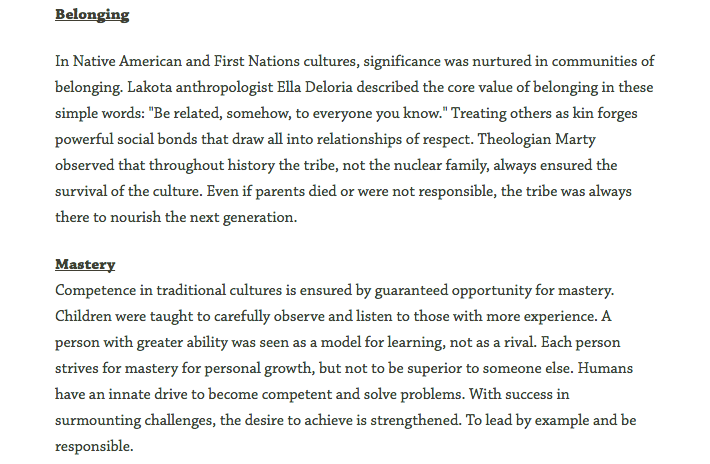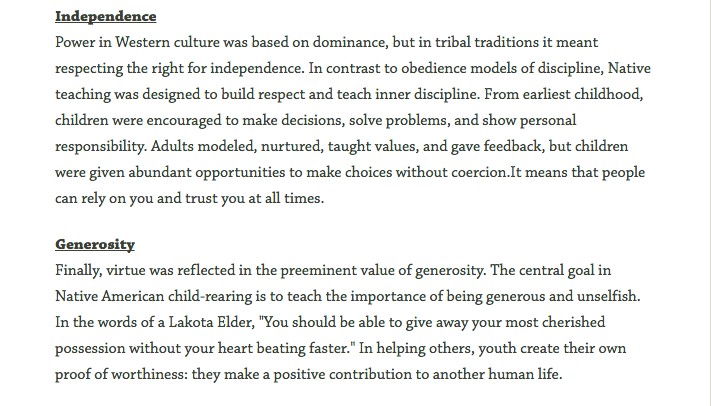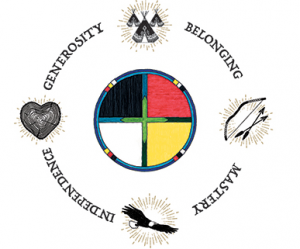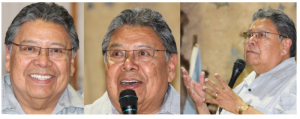- Connected North – A digital Legacy for the next 150
I came across this resource while reading the morning news. This website was launched in 2013 with just one school in Iqaluit. Connected North being shared across 30 schools currently, in the Yukon, Northwest Territories, Nunavut, Saskatchewan and Northern Ontario. The program provides schools with access to Indigenous mentors, experts and role models, along with field trips, education and mental wellness.
https://www.youtube.com/watch?v=_QfXQQPmO-k
You can visit their YouTube page here: CLICK ME
This resource has fundraised $300,000 already to help support the growth of Connected North. What makes me most happy is the stories that are being shared by their users. Storytelling is one of the best ways to share tradition and learn about new cultures.
Post #2- Circle of Courage (STARR Website)
As I’m focussing my research on the “Circle of Courage,” I stumbled upon the STARR website which is dedicated to the mission of creating positive environments where children and families flourish. This organization specializes in residential, community-based, educational and professional training programs that build on the strengths of children, adults and families in communities around the world.
The “Circle of Courage,” came from the book “Reclaiming Youth,” which is a holistic program based on traditional Aboriginal ways of knowing, personal development and community values. In 1997, this website founded Reclaiming Youth International (RYI) which offers strength-based training to professionals such as teachers, counsellors, social workers, psychologists and others working with children and youth to become resilient.
RYI’s uses the “Circle of Courage,” to identify the four universal needs of every child: belonging, mastery, independence and generosity. This model is trauma-informed and resilience-focused. Many Indigenous children around the world face challenges daily, including: drugs, violence, gang activity, conflict, trouble in school, and so much more. The model is designed to encourage kids to feel safe and comfortable in an environment of understanding and acceptance.

 In addition, there is a resource page that you can access: CLICK HERE
In addition, there is a resource page that you can access: CLICK HERE
Post #3- First Nations Principle of Learning
When researching about Reclaiming Youth at Risk, I began to look into the co-author of the book, Dr. Martin Brokenleg. Dr. Brokenleg co-developed the Circle of Courage model and provides worldwide training for individuals who work with children/youth at risk. He is a retired professor and was most recently Director of Native Ministries and Professor of First Nations Theology at the Vancouver School of Theology. The following website is a list of publications that he wrote: CLICK HERE.
Dr. Brokenleg has talked about the following topics: Reclaiming Youth at Risk, Growing Your Own Kids, Intergenerational Trauma, Creating a Positive Youth Culture, Building Strengths – Early Childhood, Culture in Classroom, and many more. Since my topic for the final project focuses on Reclaiming Youth at Risk, I will provide a short blurb about the story and an informational video of one of his talks.
For thousands of years, American Indian cultures nourished respectful and courageous children without employing punitive discipline. Now, recent youth development research is revealing the essential elements in raising confident, caring children. Drawing on his research with Drs. Larry Brendtro and Steve Van Bockern in their book, Reclaiming Youth at Risk, Dr. Martin Brokenleg presents information on the Circle of Courage which offers concrete strategies for creating environments in which all young people can grow and flourish. Dr. Brokenleg has a resource page that you can access on his personal website: martinbrokenleg.com/resources where you can access more information about his workshop opportunities and presentation slides.
School District 27 (Cariboo/Chilcotin) in the Central Interior of BC put forth an informational video which features Dr. Martin Brokenleg talking about how educators can use the Circle of Courage in their classrooms. At the 2:45 mark of the video, it begins to explain the Circle of Courage model.
Post 4- Whole Schooling (Circle of Courage and 8 Principles)
Whole Schooling is an approach to developing schools in which all children flourish in the inclusive classroom. Dr. Tim Loreman (Professor at Concordia University College) and Dr. Michael Peterson (Professor at Wayne State University) are the co-directors of the Whole Schooling Consortium. This resource supports the development of the whole child by using the 8 principles of whole school: creating learning spaces for all, empower citizens for democracy, include all in learning together, build a caring community, support learning, partner with families and the community, teach using authentic multi-level instruction, and assess students to promote learning.
Since our classrooms are so diverse, I thought this resource would be a great introduction to help us begin how the Circle of Courage may look like in our classrooms. Children learn better in environments where their social and emotional needs are being met; we also know that children learn better when experiences and activities are part of the learning process and that social interaction reinforces learning. Although the Circle of Courage is based on traditional values from cultures of people who cherish children and treat them with respect, current research in education and youth development show that these practices are in alignment with what children need to do well.
The Circle of Courage can also be used to analyze what opportunities to develop or experience these qualities a particular environment offers and whether there is a healthy balance of all the necessary qualities within the environment. Whole Schooling carries out the intentions of the Circle of Courage in its philosophies and methods. Chapter one from the PDF document focuses on the principles of the Circle of Courage, while the rest of the document focuses on how to implement the 8 principles of Whole Schooling in schools and classrooms and their relationship with the qualities of the Circle of Courage.
PDF Document: http://www.wholeschooling.net/WS/WSPress/WS & C of C.pdf
Below is a Ted Talk by Moe Carolin Anderson, who speaks about supporting the whole child for the whole world. Many of the points she brings up in her speech follows the 8 principles of Whole Schooling.
Post 5- REBIRTH: New Orleans (2013) Video
Learning Matters featured a video of the Circle of Courage being used to transform classrooms in New Orleans. This video tells the dramatic story of what may be the greatest experiment in the history of American public education: the transformation of New Orleans’ public schools after the devastation of Hurricane Katrina, from a dysfunctional, scandal-plagued monolith into a greatly improved “system of schools,” nearly all of them publicly funded but privately-operated charter schools.
New Orleans charter high school Sci Academy has made impressive academic gains; however, retaining students have been a struggle. In 2011, the school brought n an intervention program called “Circle of Courage Mentoring” to try to help students most at risk of dropping out of getting expelled. This video is raw footage from a meeting that took place six weeks into the program, just after nearly half of the group had been suspended. The students were very appreciative of how much the teachers of the program cared for them. It was more than just bringing home a paycheck.
Attached is a video clip of students in the ‘Circle of Courage Mentoring Program’ at Sci Academy, where they describe their experiences and thoughts about the charter school’s disciplinary system.
Additionally, I stumbled upon The “Circle of Courage Song” written by L. Olafson, C. Slomp and the students of Westminister Elementary School in Lethbridge, Alberta. This Video celebrates the Circle of Courage.

